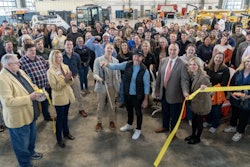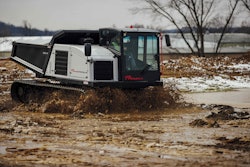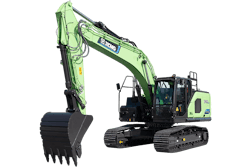
In the commercial truck, heavy construction, compact construction, utility and agriculture equipment dealership world, success hinges on the seamless alignment of three key departments: sales, parts and service.
These departments form the foundation of a dealership’s long-term growth, much like the three legs of a sturdy stool. If one leg falters, the entire structure becomes unstable.
What happens when a dealership prioritizes sales but neglects parts and service? Customer dissatisfaction, lost revenue, and a shaky foundation for growth. To thrive, dealerships must ensure that all three departments work together cohesively.
Sales: The Growth Driver
Sales generate the initial revenue stream, bringing in new- and used-equipment customers. However, a dealership that focuses solely on sales without considering long-term service and parts support is setting itself up for instability.
Strong sales teams must collaborate with parts and service teams to ensure customers receive the full lifecycle value of their equipment. Without this collaboration, even the best sales efforts may result in one-time transactions rather than lasting customer relationships.
Parts: A Key Profit Contributor
The parts department plays a vital role in overall dealership profitability, working in tandem with the service department to drive gross profit and absorption.
Customers depend on readily available, high-quality parts to keep their equipment running, and without a well-managed parts operation, even the best service team may struggle to meet customer demands. But strong sales alone aren't enough. Without a well-functioning parts department, customers may struggle to maintain their equipment, leading to frustration and lost business.
A strong parts department enhances operational efficiency, supports the service team and reinforces customer loyalty by providing essential support long after the initial sale.
Service: The Backbone of Customer Retention
The service department is equally critical in driving dealership gross profit and overall absorption. When equipment breaks down, customers turn to service for solutions, making this department a primary revenue driver.
A dealership with a high-performing service team ensures customer engagement long after the initial sale, strengthening repeat business and boosting parts sales. A weak service leg can result in lost customers, underscoring the need for a well-trained, well-equipped and responsive service team.
Aligning for Success
A dealership that balances all three departments creates a powerful synergy. Here’s how to ensure they work together effectively:
- Cross-Department Collaboration – Sales teams should introduce customers to the service and parts departments early in the relationship, reinforcing the dealership’s full-service capabilities.
- Integrated Customer Support – Parts and service departments must align with sales to offer maintenance plans, extended warranties and value-added services that increase long-term customer engagement.
- Technology Utilization – Utilizing dealership management systems, telematics and predictive maintenance tools ensures that sales, parts and service are always in sync, improving efficiency and customer satisfaction.
- Leadership and Accountability – Dealership leadership must foster a culture of shared success, where each department understands its role in the customer journey.
Final Thoughts
A well-balanced dealership operates like a sturdy three-legged stool. When sales, parts and service work in harmony, they create a foundation for sustainable growth and long-term success. This alignment not only drives revenue but also fosters lasting customer relationships that set the dealership apart.
Now, take a moment to assess your dealership. Are all three legs strong and working together? If not, the time to realign is now. Strengthen your foundation, optimize collaboration, and position your dealership for long-term success!
 Troy OttmerOttmer Consulting LLC
Troy OttmerOttmer Consulting LLC











